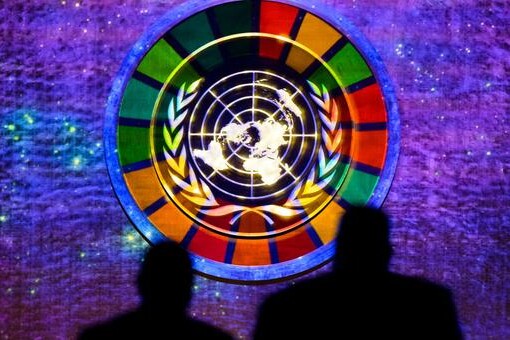On the grounds of the Hôpital de Référence Communautaire de l’Asile in the southwest of Haiti, Désir Murielle rests with her newborn son in a tent just steps away from twisted, metal and fissured concrete hunks that were once the hospital’s maternity wing.
“He was born this morning, and he is called Yves”, said Ms. Murielle.
Baby Yves would have been born in that now-wrecked ward if not for the 7.2 magnitude earthquake of 14 August that killed more than 2,200 people, injured more than 12,000 and destroyed essential infrastructure, including hospitals, roads and bridges across the southwestern region of the Caribbean island.
Maternity wing collapse
“There were two women lying in bed in the post-partum ward of the maternity wing when the building collapsed inside”, said Eluderne Déenius, a senior nurse and midwife. “You can still see the beds crushed beneath concrete”, she added, “but very fortunately the two women felt the tremor and escaped outside”.

UNFPA/Samuel Lamery
The Hôpital de Référence Communautaire de l’Asile in the south-west of Haiti was severely damaged in the 14 August 2021 earthquake.
Hôpital de Référence Communautaire de l’Asile is one of some 18 institutions in the zone most affected by the earthquake that is receiving support from the UN Population Fund (UNFPA) to continue offering reproductive health services.
Next month, with the support of the Ministry of Health, UNFPA will deploy a full-fledged mobile emergency obstetric and newborn care unit to handle deliveries and obstetric complications.
UNFPA estimates that there are around 486,000 women of childbearing age – some 343,000 of whom are under 19 years of age. In the first two months after the earthquake, UNFPA supported some 1,540 births in health centres and hospitals.
Miracle baby
One of those deliveries took place during the recent visit of UNFPA Deputy Executive Director Diene Keita – the third of a busy morning following the birth of Yves and a baby girl.
UNFPA/Samuel Lamery
“It was touching and very moving that this baby was born in the compound of this hospital that was razed to the ground by the earthquake”, she said, adding that “this is an example” of how well the UN can collaborate with local and national authorities to provide support during a humanitarian crisis.
Noting that this was a “joint effort of the UN”, she pointed out that the UN Children’s Fund (UNICEF), UNFPA, the UN humanitarian office, OCHA, and WFP’s humanitarian air service, UNHAS, had all contributed to “the miracle of this baby being born”.
Reconstruction and recovery
While the humanitarian response to the earthquake is still ongoing in this part of south-west Haiti, thoughts are now turning to the longer-term reconstruction of not just this hospital, but all the damaged and destroyed homes and infrastructure, and to how communities can recover from the crisis to once again lead productive lives.
In January, an international conference is due to be hosted by the Haitian Government to raise some of the estimated $2 billion needed for reconstruction and recovery efforts.
Gender-based violence
Combatting gender-based violence (GBV) is part of that recovery and a top priority for UNFPA.
“Women and girls are more vulnerable after an earthquake because they are no longer living at home but living alongside strangers and they don’t have access to bathroom facilities”, saidTaina Camy who works on GBV issues at UNFPA.
“More than two months after the earthquake, we have made a lot of progress. We are able to provide more services to women and girls who are in need, especially at the local level”.
Back in the maternity tent in L’Asile’s community hospital, Désir Murielle, her baby Yves and the other mothers welcome another new arrival amidst hope that in the not-too-distant future the hospital will also be reborn in its physical form.





